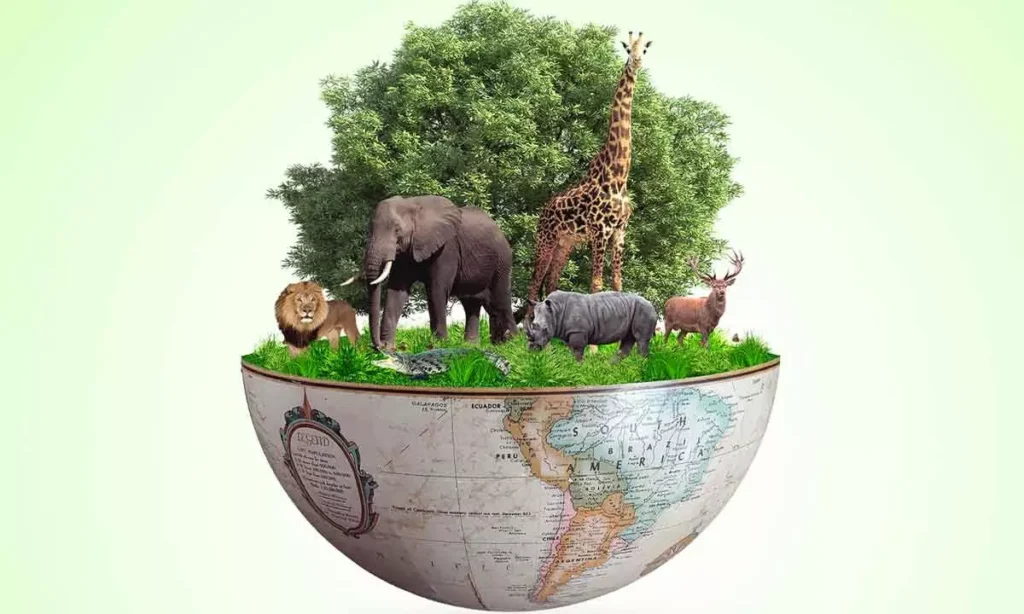The ongoing crisis of biodiversity loss, driven by human activities like habitat destruction, pollution, and climate change, poses an existential threat to life on Earth. From the food we eat to the air we breathe, our well-being is intrinsically linked to the health and diversity of ecosystems.
Addressing this monumental challenge requires more than just goodwill; it demands robust and adaptive biodiversity policy mechanisms at every level—from local communities to international bodies.
These mechanisms are the tools, strategies, and frameworks governments, organizations, and communities employ to protect, restore, and sustainably manage the planet’s vast array of life. They are the backbone of our collective efforts to halt and reverse biodiversity decline.
The Foundation: International Agreements and Global Frameworks
At the highest level, international cooperation sets the agenda and provides guiding principles. The Convention on Biological Diversity (CBD), a multilateral treaty, stands as the most comprehensive global agreement on biodiversity. Its three main goals—the conservation of biological diversity, the sustainable use of its components, and the fair and equitable sharing of benefits arising from genetic resources—underpin much of global biodiversity policy.
A landmark achievement under the CBD is the Kunming-Montreal Global Biodiversity Framework (GBF), adopted in December 2022. This ambitious framework sets global targets for 2030 and goals for 2050, aiming to put nature on a path to recovery.
Key targets include protecting 30% of Earth’s lands, oceans, coastal areas, and inland waters by 2030, and reducing harmful subsidies by at least USD 500 billion per year. The GBF serves as a critical blueprint for national action.

Complementary international agreements also play a vital role, focusing on specific aspects:
- CITES (Convention on International Trade in Endangered Species of Wild Fauna and Flora): Regulates the international trade of threatened species to ensure their survival.
- Ramsar Convention on Wetlands: Provides a framework for the conservation and wise use of wetlands.
- CMS (Convention on the Conservation of Migratory Species of Wild Animals): Aims to conserve terrestrial, marine, and avian migratory species throughout their range.
- Nagoya Protocol: Focuses on the fair and equitable sharing of benefits arising from the utilization of genetic resources.
Translating Global Ambition to Local Action: National & Subnational Mechanisms
While international agreements set the broad strokes, effective biodiversity conservation hinges on their implementation at national and subnational levels. Here, a diverse array of policy mechanisms comes into play:
Legislation and Regulations:
- Protected Area Designation: Establishing national parks, wildlife sanctuaries, biosphere reserves, and marine protected areas to safeguard critical habitats and species.
- Species Protection Laws: Laws to protect endangered and threatened species, prohibiting hunting, poaching, and habitat destruction.
- Environmental Impact Assessments (EIAs): Mandating assessments for development projects to identify and mitigate potential biodiversity impacts.
- Land-Use Planning and Zoning: Integrating biodiversity considerations into spatial planning to minimize habitat fragmentation and promote ecological connectivity.
Economic and Financial Incentives:
- Payments for Ecosystem Services (PES): Rewarding landowners or communities for managing their land in ways that provide ecological benefits (e.g., water purification, pollination).
- Biodiversity Offsets and Banking: Requiring developers to compensate for unavoidable biodiversity loss by investing in conservation elsewhere, sometimes through a “biodiversity bank.”
- Green Taxation/Subsidies: Levying taxes on environmentally damaging activities or providing subsidies for sustainable practices (e.g., eco-tourism, organic farming). A crucial element of the GBF is the call to reform or eliminate subsidies harmful to biodiversity.
- Conservation Finance Mechanisms: Innovative financial tools like conservation bonds or funds dedicated to biodiversity projects.
Participatory and Inclusive Governance:
- National Biodiversity Strategies and Action Plans (NBSAPs): Countries develop these plans to outline how they will achieve global biodiversity targets, tailoring them to national contexts. Crucially, the GBF emphasizes the full, equitable, and inclusive participation of Indigenous Peoples and Local Communities (IPLCs) in NBSAP updates.
- Community-Based Conservation: Empowering local communities and Indigenous Peoples, who often hold traditional knowledge, to manage and protect biodiversity on their lands. This includes recognizing and strengthening their rights and land tenure.
- Multi-Stakeholder Dialogues: Bringing together governments, businesses, civil society, scientists, and local communities to foster collaboration and build consensus on conservation strategies.
Knowledge and Capacity Building:
- Science-Policy Interface: Bodies like the Intergovernmental Science-Policy Platform on Biodiversity and Ecosystem Services (IPBES) strengthen the link between scientific knowledge and policy-making, including integrating indigenous and local knowledge.
- Research and Monitoring: Investing in scientific research to understand biodiversity trends, identify threats, and evaluate policy effectiveness.
- Education and Awareness: Campaigns to inform the public about the importance of biodiversity and encourage sustainable behaviors.

Challenges in Implementation
Despite the array of available policy mechanisms, their effective implementation faces significant hurdles:
- Policy Coherence: Ensuring that biodiversity goals are integrated across all government sectors (agriculture, infrastructure, energy, finance) and not treated in isolation.
- Insufficient Funding: A substantial gap remains between the financial resources needed for biodiversity conservation and what is currently available.
- Weak Governance: Corruption, lack of political will, and inadequate enforcement mechanisms can undermine even well-intentioned policies.
- Lack of Awareness: Limited public and political understanding of biodiversity’s intrinsic and economic value can hinder support for conservation initiatives.
- Conflicting Interests: Balancing conservation priorities with economic development, particularly in developing nations, often presents complex trade-offs.
- Data Gaps: A lack of comprehensive data on species, ecosystems, and human impacts can impede effective policy design and monitoring.
- Climate Change Linkages: Integrating biodiversity policies with climate change mitigation and adaptation strategies is crucial but complex, as the two crises are deeply intertwined.
The Path Forward: Towards a Nature-Positive Future
The recent tragic events, such as the fatality in northern Wisconsin, highlight the dangers of tick-borne illnesses stemming from ecological shifts, serve as a stark reminder of our dependence on healthy ecosystems. Effective biodiversity policy mechanisms are not just environmental tools; they are essential for public health, economic stability, and social justice.
Moving forward, the focus must be on—
- Accelerating GBF Implementation: Translating the global targets into robust national policies and action plans with clear timelines and accountability.
- Mobilizing Finance: Scaling up public and private investment in nature, including reforming harmful subsidies and exploring innovative financing mechanisms.
- Strengthening Governance: Enhancing institutional capacities, promoting transparency, and ensuring the rule of law in environmental matters.
- Empowering Local Actors: Ensuring the full and effective participation of Indigenous Peoples and Local Communities as partners in conservation.
- Mainstreaming Biodiversity: Integrating biodiversity considerations into all sectors of the economy and society, recognizing that nature underpins all human well-being.
Biodiversity policy mechanisms are dynamic and constantly evolving. By continuously refining these tools, learning from successes and failures, and fostering genuine collaboration, we can hope to forge a more sustainable and equitable future where humanity thrives in harmony with the natural world.




